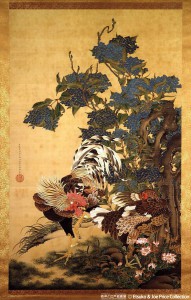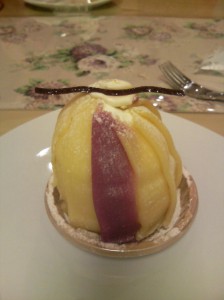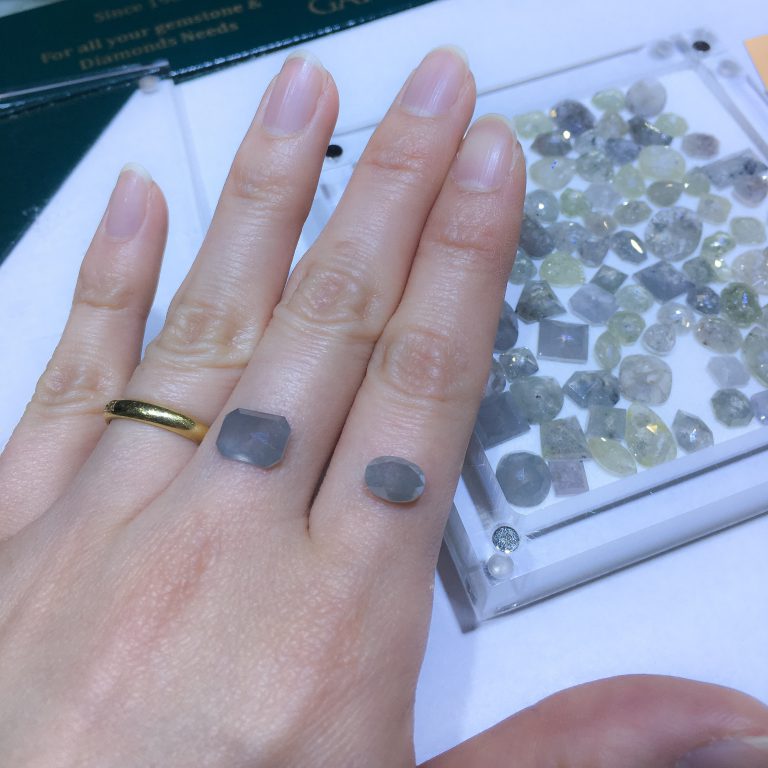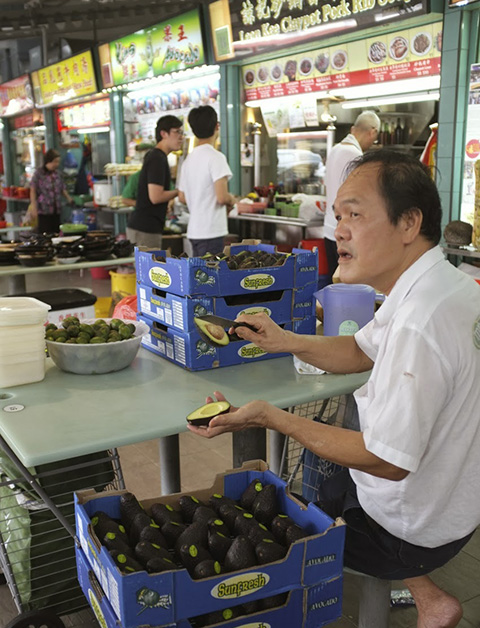I am Fujimori, the representative.
Unrelated to the business of the store (although sometimes I call it business), I wander around aimlessly whenever I see an opening.
This time, I went to the special exhibition "Jakuchu: Shaka Sanzonzon Zo and Kotsuyoshi (Three Images of Buddha and festschrift) after 120 years" at Shokokuji temple in Kyoto, which was held until yesterday, June 3, 2012.
I had been anxiously awaiting my visit to Kyoto for the past month or so, but I was about to give up because I could not open my store! I woke up my lazy body and left Sangenjaya at 6:00 a.m. to go to Kyoto.
I had missed the Jakuchu exhibition of the Price Collection in Ueno last year, so I wanted to see it somehow, and I wanted to eat something delicious in Kyoto.
I went straight to Shokokuji Temple, just in time for the 10:00 a.m. opening, but the line was already very long. I was prepared for this, but I got to the end of the line and waited for two hours while reading a book. It was the longest wait since Captain EO, and I felt a little light-headed, but finally, around noon, we entered the museum.
The museum is divided into two exhibition halls, the first of which displays Jakuchu's very early works and a series of ink and wash paintings on sliding doors that used to decorate Rokuonji Temple.
Grapes on fusuma-e (sliding door painting)
Unlike oil paintings, which are painted by adding more and more layers of paint, Jakuchu's ink paintings are painted with grace and delicacy, and the presence of the white background cut out with fine shades of ink is aesthetically subtractive, which makes us feel very comfortable without having to look around in various ways.
When we left the first exhibition room, we had to wait in line again. After waiting in a cattle prod due to admission restrictions, we finally made it to the second main exhibition room.
This is a big project, which is the first time in 120 years to exhibit all 33 of Jakuchu's works, including the three Shakyamuni statues (still owned and exhibited at Shokokuji Temple) and the 30 festooned paintings (presented to the Imperial Household after the Meiji Restoration, now owned by the Imperial Household Agency), which were originally donated to the temple during Jakuchu's lifetime. The exhibition room itself was designed and built 20 years ago in advance to display the 33 paintings, and it is a very enthusiastic project. Inside, the room was as crowded as a crowded train. But the view that spreads across the entire surface is truly spectacular.
The motifs include roosters and phoenixes, insects and amphibians, fish, octopus, birds, and various seasons and plants. The animals, which are very much attached to nature and drawn freely with clear lines, are simply fun and exciting to look at. When painted on a grayish-brown (or is it gold without luster?) base, the reddish-brown color is simply delightful and exciting to look at. The contrast between red and green, which is typical of Jakuchu, as well as the slight blue and, above all, white colors, are very effective.
More of a graphic work than a painting. It is a graphic work rather than a painting, suitable for posters and pop art. I feel that the sense of the mid-Edo period has been linked to the needs of today without any special devices or annotations. So, it is quite understandable that the Jakuchu boom has come to a halt, and people are beginning to ridicule his works as overrated by the "meek".
I ended up leaving the venue at 2 pm.
Lunch time was already over at the lunch spot we had targeted. To save time, we had lunch in the student district of Demachiyanagi.
Continue on the Keihan train to Rakunan and Fukakusa Stations.
We were going to Ishimine-ji Temple, which is located on the side of Fushimi Inari. This is the temple where Jakuchu spent the last years of his life, and we made it our destination for the second half of our short day trip because it is said to have a group of stone Buddha statues, called "Five Hundred Arhats", which represents the life of Buddha, designed and made by Jakuchu.
The site with detailed explanation about the Five Hundred Arhats of Seokbong-ji Temple.
http://www1.kcn.ne.jp/~yosikatu/rakan5.htm
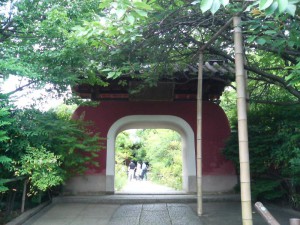
The gate of Shihpohji. The slightly Chinese oriental design is a good balance to the scenery.
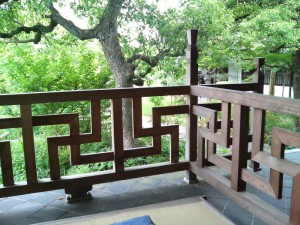
A fence in the precinct. The motif is classic, but the way it is used is very modern.
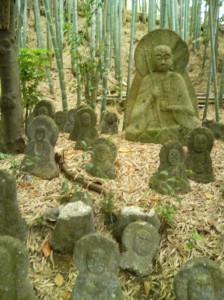
Stone Buddhas. About 500 stone Buddhas are lined up in the mountain, in a storybook style, from the birth of Buddha to nirvana.
The book "Pilgrimage to Old Temples" by Tatsuhiko Shibusawa was the reason for my visit, but the stone Buddhas in the forest are very gentle and friendly, a bit like a theme park.
Leaving Ishimine Temple behind, we stroll aimlessly through the leisurely alleys of Kyoto's suburbs. We reach the hillside of Fushimi Inari, the head temple of Inari, famous for its endless red torii (shrine gates).

Kyoto Murder Mystery - A Scenery?
We walked up the mountain for a while, passing through a torii gate, and took a break with beer and Warabimochi (Warabi rice cakes) at a sukiya-style teahouse.
Looking at the time, it is already 5 o'clock. The bullet train back home leaves at 8:00.
Return to Shijo by Keihan train and cross the Kamo River to Ponto-cho.
We wander to a kappo-style izakaya that looks delicious and not too expensive.
It was still early in the day, so there were few customers, so we took our time and had a couple of glasses of cold sake while enjoying the delicious food.
The chef told me that a one-day trip to Kyoto would be a waste of time.
Finally, time was up when the yuba porridge was sprinkled with black shichimi (seven spices).
I rushed to Kyoto Station.
Since I couldn't eat dessert, I bought a Mar Blanche cake at Isetan in the station,
I rushed to the Shinkansen.
I was tipsy and soon fell asleep. In no time at all, we were in Shinagawa.
I returned home at 11:00. Ate Naruto Kintoki Mont Blanc from Mar Blanche,
I go to bed looking at an exhibition art book I bought.
Satisfied. It was a good day.
A one-day trip to Kyoto is certainly more expensive than I would like to think about transportation costs,
I don't have to think about staying the night, so I don't need to pack anything and it's really easy.
Next time, we are secretly planning a day trip to Katsura Rikyu.
